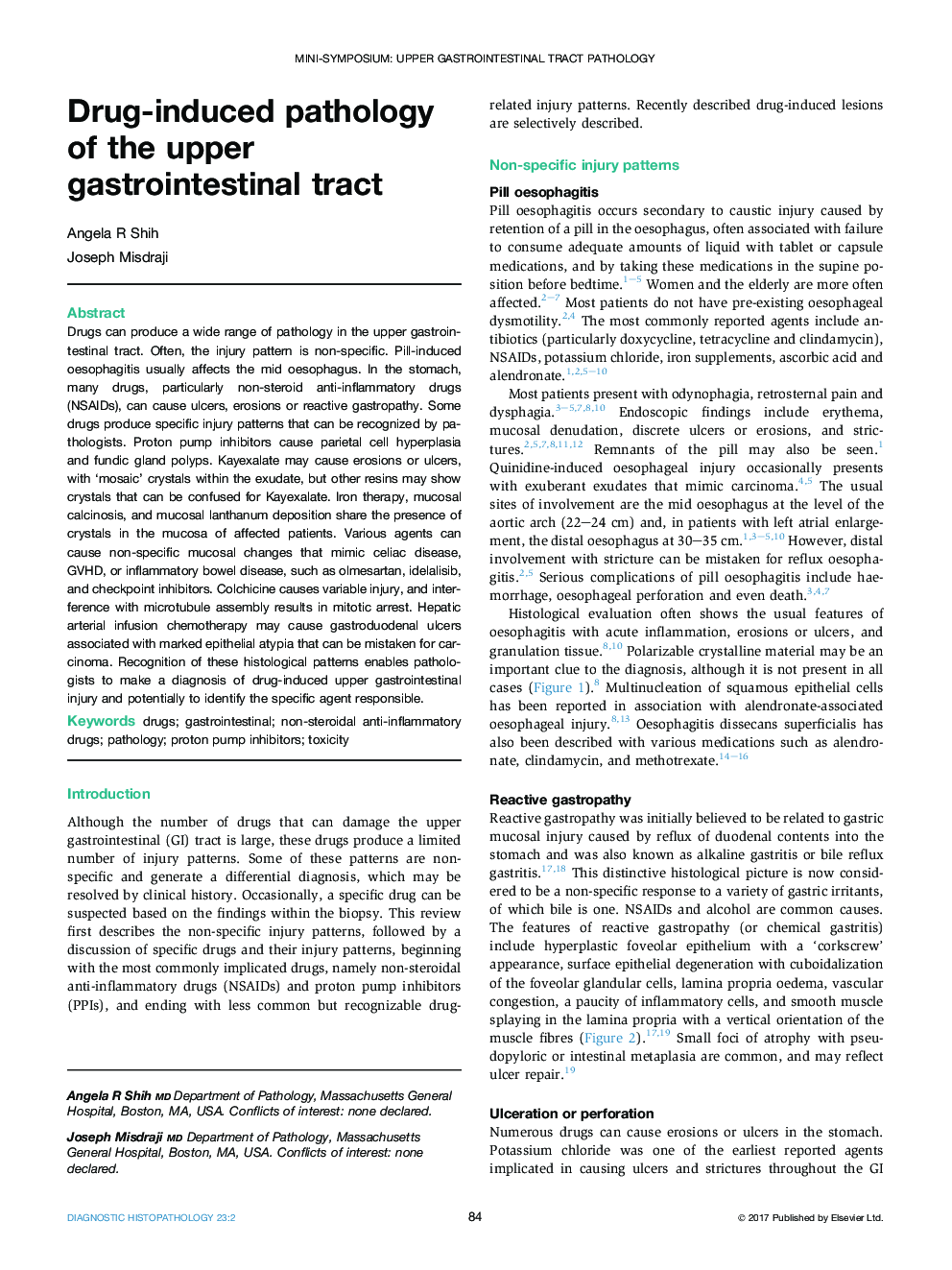| کد مقاله | کد نشریه | سال انتشار | مقاله انگلیسی | نسخه تمام متن |
|---|---|---|---|---|
| 5716039 | 1411132 | 2017 | 12 صفحه PDF | دانلود رایگان |
Drugs can produce a wide range of pathology in the upper gastrointestinal tract. Often, the injury pattern is non-specific. Pill-induced oesophagitis usually affects the mid oesophagus. In the stomach, many drugs, particularly non-steroid anti-inflammatory drugs (NSAIDs), can cause ulcers, erosions or reactive gastropathy. Some drugs produce specific injury patterns that can be recognized by pathologists. Proton pump inhibitors cause parietal cell hyperplasia and fundic gland polyps. Kayexalate may cause erosions or ulcers, with 'mosaic' crystals within the exudate, but other resins may show crystals that can be confused for Kayexalate. Iron therapy, mucosal calcinosis, and mucosal lanthanum deposition share the presence of crystals in the mucosa of affected patients. Various agents can cause non-specific mucosal changes that mimic celiac disease, GVHD, or inflammatory bowel disease, such as olmesartan, idelalisib, and checkpoint inhibitors. Colchicine causes variable injury, and interference with microtubule assembly results in mitotic arrest. Hepatic arterial infusion chemotherapy may cause gastroduodenal ulcers associated with marked epithelial atypia that can be mistaken for carcinoma. Recognition of these histological patterns enables pathologists to make a diagnosis of drug-induced upper gastrointestinal injury and potentially to identify the specific agent responsible.
Journal: Diagnostic Histopathology - Volume 23, Issue 2, February 2017, Pages 84-95
